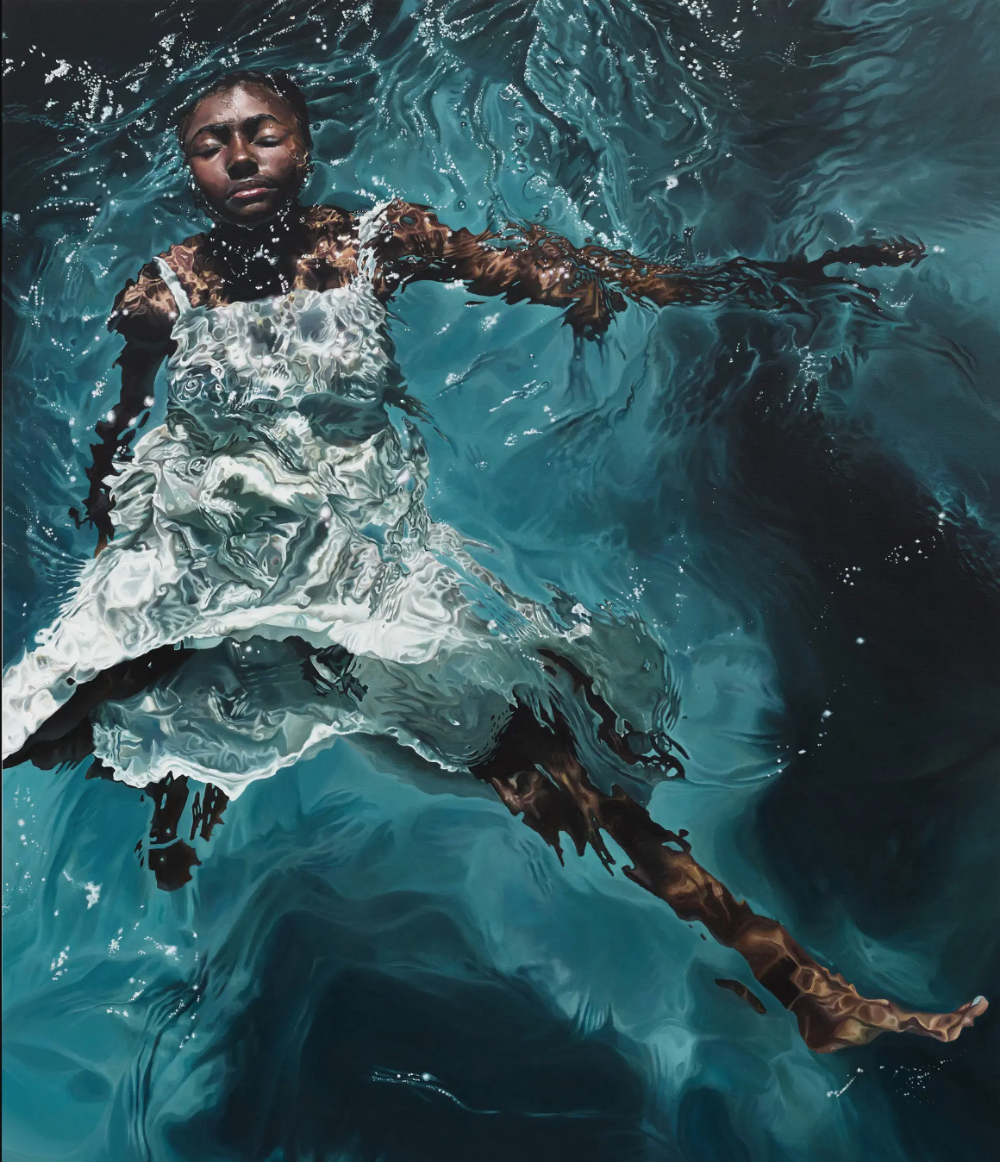Teach This Poem, though developed with a classroom in mind, can be easily adapted for remote-learning, hybrid-learning models, or in-person classes. Please see our suggestions for how to adapt this lesson for remote or blended learning. We have also noted suggestions when applicable and will continue to add to these suggestions online.
 Look closely at the visual art by Calida Rawles.
Look closely at the visual art by Calida Rawles.
The following activities and questions are designed to help your students use their noticing skills to move through the poem and develop their thinking about its meaning with confidence, using what they’ve noticed as evidence for their interpretations. Read more about the framework upon which these activities are based.
- Warm-up: Look closely at the visual art by Calida Rawles here and here. What stands out to you in each photograph? Why? Look again. What similarities and differences do you see between each photograph?
- Before Reading the Poem: Listen to the Nina Simone song “I Wish I Knew How it Felt To Be Free.” What do you notice in the song? What words or phrases stand out to you? Why?
- Reading the Poem: Read the poem “Country of Water” by Mahogany L. Browne silently. What do you notice about the poem? Annotate for any words or phrases that stand out to you or any questions you might have.
- Listening to the Poem: (enlist two volunteers to read the poem aloud): Listen as the poem is read aloud twice, and write down any additional words and phrases that stand out to you. (Teachers, as this is a long poem, you may want to have students read the poem once and then watch the video of the poet reading the poem.) Or, opt to listen to the poet read the poem here.
- Small-group Discussion: Share what you noticed about the poem with a small group of students. How would you describe the speaker in the poem? What does the speaker believe? What do you believe? How does the poem compare to the resources from the beginning of class?
- Whole-class Discussion: What do you think of the title, “Country of Water”? What does it mean to be a country of water?
- Extension for Grades 7-8: “Country of Water” opens with the line “I know who I am because I believe it.” What does this mean to you? Remember what you said you believed earlier. How do you know it? Create an original piece of art, poem, song, etc. that expresses what you believe.
- Extension for Grades 9-12: Re-read the lines “I am water // I dive into my own currents / I dress my dreams in the satin breath / Of my ancestors.” What is your relationship to water? To your ancestors? Using repetition, the way Mahogany Brown does, among other poetic devices, write a poem that responds to these questions.
Mahogany Browne is a featured poet of Dear Poet 2023. Every National Poetry Month we present Dear Poet, a multimedia education project that invites young people in grades five through twelve to write letters in response to poems written and read by award-winning poets. For National Poetry Month in April, students’ letters will be published in a booklet on Poets.org alongside poets’ responses. The submission period for Dear Poet 2023 is now open through March 3, 2023. Use the 2023 Dear Poet lesson plan and ask your students to write a letter to Mahogany Browne, Danez Smith, Richard Blanco, KB Brookins, Naomi Shihab Nye, or Marilyn Chin. Find out more.
Free Verse: poetry not dictated by an established form or meter and often influenced by the rhythms of speech. Read more.
